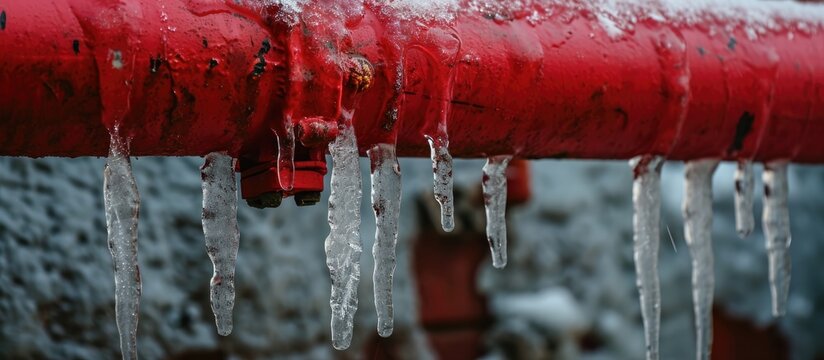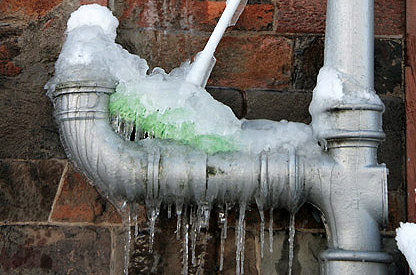How to Avoid Frozen Pipes in Winter: Expert Tips
How to Avoid Frozen Pipes in Winter: Expert Tips
Blog Article
Just how do you feel on the subject of How to prepare your home plumbing for winter weather?

Cold weather can damage your plumbing, particularly by freezing pipelines. Right here's how to stop it from occurring and what to do if it does.
Introduction
As temperature levels decrease, the danger of frozen pipes boosts, potentially bring about expensive repairs and water damages. Comprehending just how to avoid icy pipelines is critical for property owners in cool climates.
Recognizing Icy Pipes
What triggers pipelines to ice up?
Pipes freeze when subjected to temperature levels listed below 32 ° F (0 ° C) for expanded durations. As water inside the pipes freezes, it broadens, taxing the pipe walls and potentially triggering them to break.
Threats and problems
Icy pipes can lead to water system interruptions, residential property damages, and costly repair services. Burst pipes can flood homes and trigger substantial architectural damages.
Indicators of Frozen Pipes
Determining icy pipes early can prevent them from breaking.
Just how to determine frozen pipelines
Search for lowered water circulation from faucets, uncommon odors or noises from pipes, and noticeable frost on subjected pipelines.
Prevention Tips
Insulating prone pipelines
Wrap pipes in insulation sleeves or utilize warm tape to shield them from freezing temperature levels. Focus on pipelines in unheated or external areas of the home.
Heating techniques
Maintain indoor areas adequately heated up, specifically areas with plumbing. Open cabinet doors to enable cozy air to flow around pipes under sinks.
Safeguarding Outdoor Pipes
Garden hose pipes and exterior taps
Separate and drain yard pipes before winter. Install frost-proof spigots or cover outside faucets with shielded caps.
What to Do If Your Pipes Freeze
Immediate actions to take
If you suspect icy pipes, keep faucets open up to alleviate stress as the ice melts. Make use of a hairdryer or towels soaked in hot water to thaw pipes gradually.
Long-Term Solutions
Structural changes
Consider rerouting pipes far from outside wall surfaces or unheated locations. Add added insulation to attic rooms, basements, and crawl spaces.
Upgrading insulation
Buy high-grade insulation for pipelines, attics, and walls. Proper insulation assists maintain constant temperature levels and minimizes the threat of icy pipelines.
Verdict
Protecting against icy pipelines calls for positive procedures and quick responses. By understanding the reasons, indicators, and safety nets, house owners can safeguard their plumbing throughout winter.
5 Ways to Prevent Frozen Pipes
Drain Outdoor Faucets and Disconnect Hoses
First, close the shut-off valve that controls the flow of water in the pipe to your outdoor faucet. Then, head outside to disconnect and drain your hose and open the outdoor faucet to allow the water to completely drain out of the line. Turn off the faucet when done. Finally, head back to the shut-off valve and drain the remaining water inside the pipe into a bucket or container. Additionally, if you have a home irrigation system, you should consider hiring an expert to clear the system of water each year.
Insulate Pipes
One of the best and most cost-effective methods for preventing frozen water pipes is to wrap your pipes with insulation. This is especially important for areas in your home that aren’t exposed to heat, such as an attic. We suggest using foam sleeves, which can typically be found at your local hardware store.
Keep Heat Running at 65
Your pipes are located inside your walls, and the temperature there is much colder than the rest of the house. To prevent your pipes from freezing, The Insurance Information Institute suggests that you keep your home heated to at least 65 degrees, even when traveling. You may want to invest in smart devices that can keep an eye on the temperature in your home while you’re away.
Leave Water Dripping
Moving water — even a small trickle — can prevent ice from forming inside your pipes. When freezing temps are imminent, start a drip of water from all faucets that serve exposed pipes. Leaving a few faucets running will also help relieve pressure inside the pipes and help prevent a rupture if the water inside freezes.
Open Cupboard Doors
Warm your kitchen and bathroom pipes by opening cupboards and vanities. You should also leave your interior doors ajar to help warm air circulate evenly throughout your home.

Do you really like reading about Helpful Tips to Prevent Frozen Pipes this Winter? Put a review directly below. We'd be happy to listen to your feelings about this article. We hope to see you back again before long. Be sure to set aside a second to promote this entry if you appreciated it. Thank you so much for your time invested reading it.
Request Service Report this page